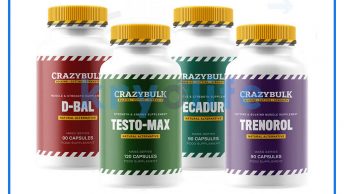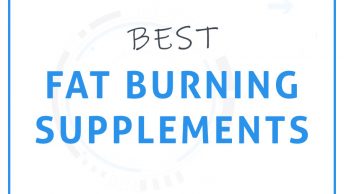Quick summary
- Muscles are adaptable tissues that respond to external stimulus by developing micro-tears during a workout, which triggers the activation of satellite cells and the mending of the tears. This process, when actively happening for an extended period, results in an increase in mass or cells per square mm, which is reflected as muscle growth.
- Body type plays a crucial role in muscle growth, as there are three main types: ectomorphs, mesomorphs, and endomorphs. Depending on the body type, the workout and diet should be adjusted to maximize muscle growth.
- The time it takes to see muscle growth is highly subjective, influenced by various factors such as muscle fiber repair, neurological link, and muscle adaptation. Generally, a beginner might need at least eight weeks to see visible muscle growth, while an experienced hand needs only 3 – 4 weeks.
- To accelerate muscle growth, experts recommend focusing on muscle groups and training them two times a week, increasing protein intake to 1.2 ~ 1.7 grams per kilogram of body weight, adjusting reps and sets, exploiting the full range of motion, doing cardio exercises, resting for at least 48 hours, and maintaining a protein-rich diet. Gradually increasing weight, controlled movements, and conscious breathing are also essential tips.
Are your muscles taking too long to show up?
Then this article is precisely made for you.
The muscles are a classic dilemma, and carving them is an art that takes years of perseverance and hard work.
There is an obvious question that might pop into the minds of beginners and layman; how long does it take to see muscle growth?
The answer is highly subjective and takes a good insight into the physiology of muscles and exercise strategies.
This article is made particularly for those groups of people who struggle with muscle building.
In most cases, people might be doing something wrong or missing something vital.
After reading this, you should probably be able to figure out where you need a fix and what all needs to change.
So, without stuffing too many words here, let us move and dig deeper about muscle growth and its science.
Read more: How Long Does It Take To Tone Arms?
How do your muscles grow?

Muscles are one of the most resilient and adaptable tissues group in your body, that can quickly respond to external stimulus.
When you lift weights, go jogging, or even when you walk, you give stress to your muscle fibers, which results in microscopic damage to the tissue.
However, these damages are good for the muscles and, in fact, normal because they are evolved to get injured and get self-repaired.
The tissues get microtears during a workout, and this triggers the satellite cells on the muscle fiber, and they become activated.
Once satellite cells are active, there is only one thing that would happen – the mending of the tears.
This process, when actively happens for an extended period, there will be an increase in mass or cells per square mm, which is reflected as muscle growth.
There are certain hormones involved in muscle growth, which take care of satellite cells and a bunch of other stuff inside your body.
Glucagon, cortisol, epinephrine, norepinephrine, testosterone, Insulin-like growth factor (IGF), and brain-derived neurotrophic factor (BDNF) are the hormones involved in the muscle-building process.
Once an injury is induced in your muscle tissue, these hormones act on various action centers and initiate four processes:
- Sending the satellite cells to necessary parts of muscles.
- Inducing the angiogenesis.
- Repairing the injuries on muscle tissue.
- Management of the muscle mass and its shape.
Not just that, there are hundreds of metabolic reactions that have to happen in perfect synchrony for the muscles to grow as you desire.
That means your diet, your mental health, your lifestyle, workout habits, genetics, and even ethnicity influence muscle growth.
Your body type influences muscle growth
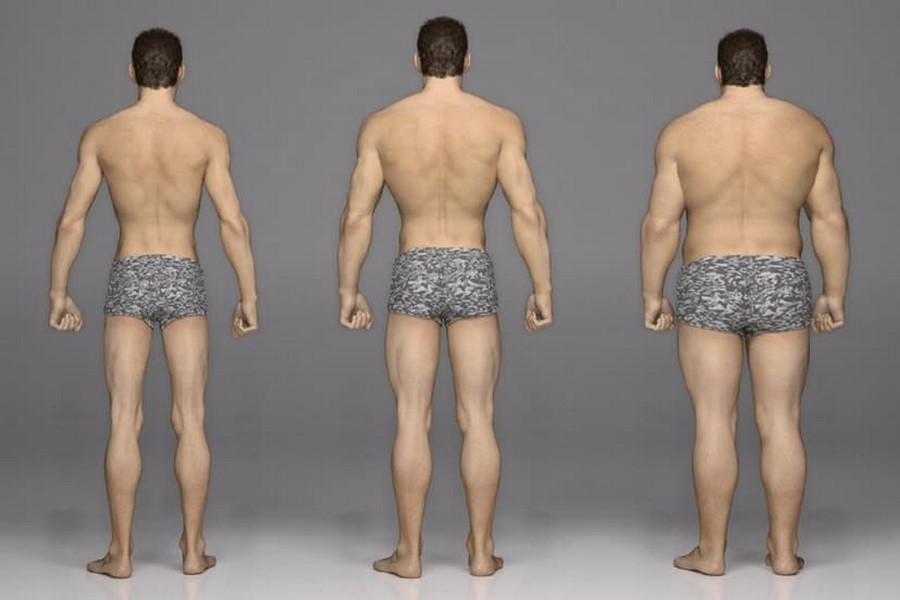
This is the least known fact that most of us haven’t even heard about.
There are three kinds of body in men, and depending on this frame/structure, the muscle growth vary.
Namely, endomorph, mesomorph, and ectomorph are the three types of body nature that men usually get1.
Assessing and identifying the body type can significantly help you plan the resistance workout you need and diet regiment.
Based on the body, you can adjust the macro & micronutrient flux and fine-tune your workout by adjusting reps & sets.
Ectomorphs are the skinny type, who can comfortably eat loads of food and not gain weight.
Their body has less bone mass, body fat, and will have lean muscles.
This category of people must focus on intense and short-interval training for big muscle groups to bulk them up.
Due to body nature, it is a little difficult for them to increase in size, but not impossible.
Mesomorphs, on the other, are people with the medium-sized bone structure, and they are mostly athletic in shape.
The genetic predisposition mostly favors them, and therefore their entire metabolism and hormones support muscle growth.
There is a catch though, ectomorphs can quickly get fat, so they should watch out for their diet.
Endomorphs are people with a large & wide bone structure, and their body has a natural tendency to store maximum fat.
They usually have short stature and the extra fat targets limbs.
These people must work out harder and target fat burning.
Diet should be adjusted for maximum protein intake, while carb: fat should be regulated.
How long does it take to see muscle growth?
If you need to know how long it takes to see muscle growth, then you need to know beyond micro-tears.
First of all, there are no specific time frames for muscle growth.
It happens gradually and slowly, influenced by hundreds of factors.
But why do you see a sudden change in muscle shape when you begin gym class?
It’s called transient hypertrophy, which is a physiological phenomenon occurring when your muscles experience sudden stress resulting in the activation of the blood pumps to supply necessary nutrients.
You can consider it as s kind of jump-start for muscles, which subsides as you reach home.
According to expert bodybuilders and trainers, muscle growth can take days, weeks, or even months to see.
Technically, the muscle growth starts the moment you begin your workout, but for it reflect on your physique, it’s a different story.
It is the ability of your muscle fibers to repair the cracks or microtears that determine the speed at which muscles bulk up.
Another factor that determines muscle growth time is the neurological link and muscle adaptation.
For example, most of us might feel a bit shaky when you try an exercise for the first time, but when you progress in that workout, the exercise becomes more comfortable.
This happens because your muscle gets adapted to the stress pattern, and faster it happens, sooner will be the results.
Simply put, a beginner might need at least eight weeks to see visible muscle growth, while an experienced hand needs only 3 – 4 weeks.
How can you get accelerate muscle growth?

In order to accelerate muscle growth, experts suggest three techniques that can utilize the resources you have and give you quick muscle growth.
Focus on muscle groups and train them two times a week
This is a classically known trick that most of the bodybuilders might know.
Focusing on a specific muscle group is the first and foremost requirement to maximize gains, and giving them workout two times a week is the optimum that scientists have found out.
Some of the studies even suggest that splitting your muscle groups into two-day split gave the best results, even if you go easy on the exercise.
However, some trainers believe three-day split to be the best, but it is highly dependent on the body nature of the trainee.
But one is common for all bodybuilders, give at least two days of a gap for muscle hypertrophy whether its two-day or three-day split.
Protein per body weight
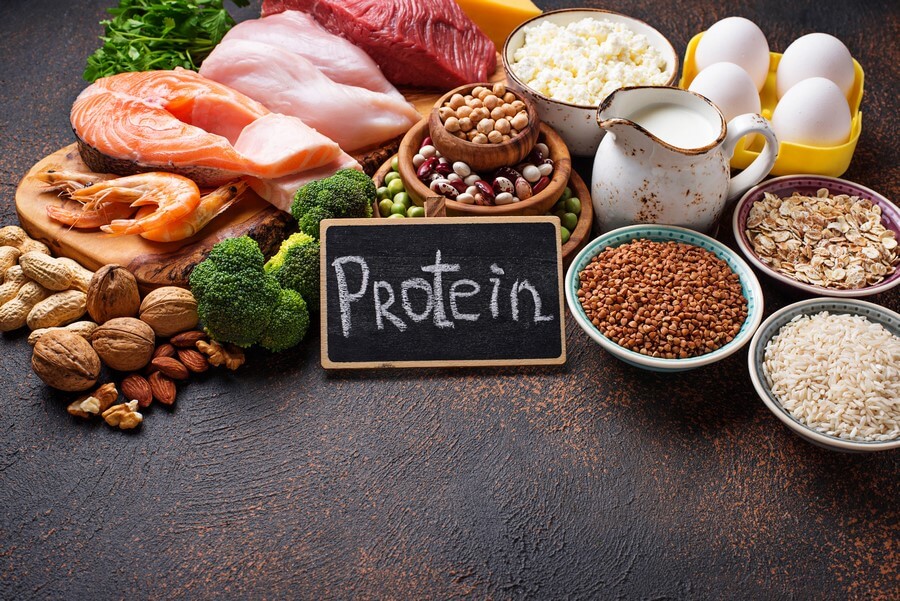
According to the bodybuilding experts, eating protein is the most crucial part of bulking apart from inducing stress on muscles.
Experts say you must eat 1.2 ~ 1.7 grams2 of protein for each kilogram of ideal bodyweight you are targeting.
That means you must make your meals protein rich irrespective of whether its breakfast, lunch, or dinner.
Reps and sets matters
For maximum microtears, try large weights for a smaller number of reps, which would eventually help you gain faster muscle.
Here, increasing stamina is a secondary need; therefore, a larger number of reps are usually not needed.
The thumb rule says, for every exercise, perform three to six sets with six ~ 12 reps, giving 30 ~ 90 seconds of rest3.
Exploit the full range of motion
If you’re a beginner and need faster muscles, then give all the exercise their full range of motion.
This means, when you do squats make sure you lower your body to maximum range possible instead of cutting halfway.
While the half range motions are popular in bodybuilding, it comes a later point of time that too for professionals.
Cardio and rest matters

There two essential factors that need a special mention, they are cardio and rest.
Cardio exercises are also called aerobic exercises, in which the main focus is to increase the heart rate as well as breathing rates.
The primary benefit is for the cardiovascular system, while the muscle function and growth are also boosted.
Not just that, people who dedicate extensively to cardio workouts tend to have better endurance.
There is a recommendation4 for cardio by scientists, according to which a cardio exercise should raise your heart rate by 70 ~ 80% of heart rate reserve (HRR), while each session should be between 30 ~ 45 minutes long four to five days each week.
The rest, on the other hand, is another critical factor that could determine how fast you could see your muscle growth.
This is also one of the most overlooked factors by bodybuilders.
Technically it is during rest your muscle grows.
Workouts only serve as a means to trigger muscle growth, but it’s the rest or recovery period during which muscle hypertrophy occurs.
Generally, 48 hours of rest is recommended, and that is one reason why we have mentioned giving two days gap for muscle groups on the suggestion above.
Repairing occurs when you sleep and during other muscle-free hours, during which the body mends the microtears.
Diet for faster muscle growth
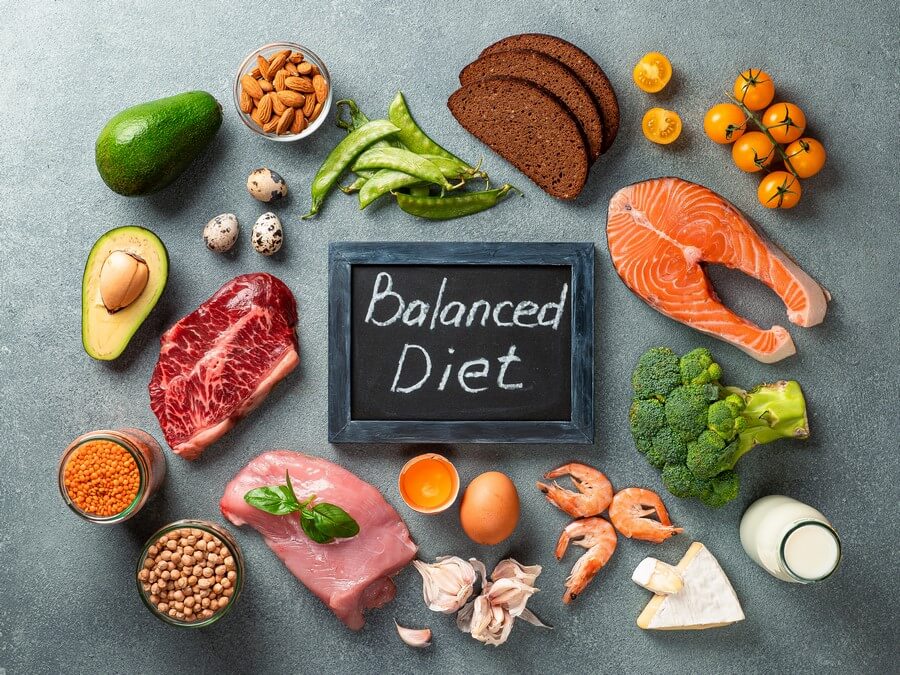
Food is the best part of bodybuilding because if you want muscle gain, then you can eat a lot.
Pause before you could jump in joy because eating with restriction is, in fact, the best choice for gaining faster muscle.
While it is true that you need a meat-rich diet, that doesn’t mean you can have lots of fast/junk foods.
As mentioned above, protein intake is your primary concern, and getting 1.2 ~1.7 grams per kilogram of body weight is a hectic task.
For example, if you are a 170-pound man, then you need 77 kg x 1.2 gm of protein, that means around 92 grams of protein in a day for faster muscle growth.
Targeting a protein-rich diet5, three times a day and supplementing the rest is the best way.
Some of the best recommendations for protein-rich foods are beef, lamb, poultry, fish, pork, milk and milk products, oyster, and egg.
If going green is your thing, then veggies like soybeans, legumes, cereals, nuts, nuts, and spinach are what you should include in your diet.
Quick tips to get faster muscles
- Don’t forget to warm up, because heating your body and increasing the blood pumping is very important.
- Before jumping into the heavyweights, do light weights to jump-start the muscle groups.
- Gradually increase the weight to maximum, maybe after 5 ~ 10 reps in order avert injuries.
- Controlled movements are very important to prevent injuries. Resisting using uncontrolled movements can damage your joints.
- Forced relaxation by conscious breathing will help your muscles get faster nutrient supply, which helps you with stamina.
- Pain after new workouts are a good thing, which might be a sign of the correct amount of microtears, but if there is a severe pain incapacitating you, immediately consult the doctor.
- Don’t forget to consider cardio in your workout, which is a classic factor that can motivated muscle growth.
In a nutshell

So, how long does it take to see muscle growth?
You know a definite figure isn’t the right answer because you have gathered the rudiments of bodybuilding.
Still, roughly speaking, a beginner might need a couple of months, while an experienced hand needs just 3 ~ 4 weeks.
You take some conscious efforts to speed up the muscle-building process, and the first step is to consult the best in the field.
Go to your nearest gym and take an appointment with the concerned personnel there.
It is better to follow their workout strategy and inculcate some of the basic ideas you have into it.
Having a personal trainer is also a good choice, especially if you are a beginner, and that is one of the important ways to get faster muscle.
A trainer can help you correct wrong exercises, and customize a workout depending on your performance.
Also, having touch with your doctor is a good thing, especially when it comes to diet and supplementation.
References
- Kirkpatrick, Sue W., and Diane Moody Sanders. “Body image stereotypes: A developmental comparison.” The Journal of Genetic Psychology 132.1 (1978): 87-95. https://www.tandfonline.com/doi/abs/10.1080/00221325.1978.10533317
- https://health.usnews.com/health-news/health-wellness/articles/2015/12/11/how-much-protein-do-you-really-need
- https://health.usnews.com/wellness/fitness/articles/2018-02-16/how-long-does-it-take-to-build-muscle
- https://www.ncbi.nlm.nih.gov/pmc/articles/PMC4523889/
- Tipton, Kevin, and Robert R. Wolfe. “Exercise, protein metabolism, and muscle growth.” International journal of sport nutrition and exercise metabolism 11.1 (2001): 109-132. https://dspace.stir.ac.uk/handle/1893/7628#.XmaUWagzZPY



